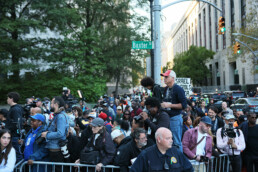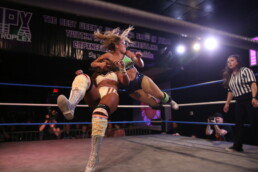A Major University "Bending the Knee"
 December 4, 2025 Greetings, Meteor readers, I got called ma’am today. Someone get me the number for Anne Hathaway’s Botox guy. In today’s newsletter, the editor-in-chief of one of the two magazines shut down by the University of Alabama speaks out. Plus, somehow, 2026 already has a color of the year. It’s not great. Spotify says I'm only 27, Shannon Melero  WHAT'S GOING ONRoll(back) Tide: “We’re all really confused,” Gabrielle Gunter tells me, audibly exasperated. Gunter, a grad student at the University of Alabama, has had an unusually long week, and it’s not just because she’s preparing for finals. On Monday, Gunter and the staff members of the university’s student media department gathered and were told that two of four university-run publications would be suspended. Alice, the women’s magazine where Gunter was editor-in-chief, and Nineteen Fifty-Six, a Black culture and student life magazine, were getting the axe. The reason for the publications’ suspension? The university’s decision to comply with a July anti-DEI memo from U.S. Attorney General Pam Bondi. But to understand how a memo cost Gunter her job, you’ve got to go backwards a bit. Last summer, the state of Alabama passed SB 129, which prohibits state institutions from sponsoring DEI programs or offices. University of Alabama was obligated to follow suit and did so, removing offices of the Black Student Union and LGBTQ+ support groups. Gunter was under the impression that student publications were safe from SB 129 because of First Amendment protections. But the Bondi memo skirts around those protections by listing vague “best practices” for implementing DEI rollbacks. One of the conditions listed is “unlawful proxy discrimination,” a term used in the meeting on Monday when students were being told about their magazine suspensions. “I’m devastated but, regrettably, not surprised by the [university’s] decision to suspend Nineteen Fifty-Six,” the magazine’s editor in chief Kendal Wright, wrote in a statement. “Regardless of our suspension, there will continue to be a need…for the stories of the university’s Black community to be told.”  RECENT COVERS OF NINETEEN FIFTY-SIX. BACK ISSUES WILL STILL BE AVAILABLE AS AN ARCHIVE, THE UNIVERSITY TOLD STUDENTS. (SCREENSHOT VIA NINETEEN FIFTY-SIX) “They’re not suspending us based on content; they’re doing it based on our target audience,” Gunter explains. Like all publications (including this one!), Alice and Nineteen Fifty-Six cater to specific groups while still maintaining equal opportunity hiring practices. Anyone can read these magazines. But, under Bondi’s “unlawful proxy” guidance, the fact that they are designed to appeal to women and Black students is considered a “divisive” implementation of DEI—or at least that is how the Trump administration has chosen to define it, and what UA is adhering to in defense of its funding. (It’s worth noting here that the athletic program at Alabama alone brings in over $200 million in revenue for the school. The cost to operate Alice is somewhere in the neighborhood of $10,000.) But surely, if the university is doing all of this, there must be some external pressure from the government to comply, right? Gunter doesn’t believe this is the case. She explains that the school’s newspaper, The Crimson White, “hasn’t found anything that indicates that there was pressure from the Board of Trustees or legislators in Alabama” to eliminate the magazines. “They’re bending the knee to the government,” Gunter says. “I think the [slow rollback of diversity groups] allowed for a rise of conservatism and fascism on our campus.” Gunter adds that despite the university’s racist history, changes have been made over the years to make the campus more inclusive, such as student identity groups, the UA Safe Zone, and, of course, Nineteen Fifty-Six, which published its first issue in 2020 and was titled after the year the first Black student, Autherine Lucy Foster, was allowed to enroll at UA. Much of that progress, she believes, is now being undone.  RECENT ISSUES OF ALICE, WHICH WILL ALSO REMAIN AVAILABLE AS AN ARCHIVE. GUNTER SAYS THE UNIVERSITY HAS NOT CLARIFIED WHEN HER STAFF WILL LOSE ACCESS TO THE WEBSITE. (SCREENSHOT VIA ALICE) In May, the university’s Women and Gender Resource Center was renamed (per SB 129 rules) the “Camellia Center.” According to an accountability group formed by UA alumni and former staff, Break the Cycle Collective, the school also dissolved the Summersell Library, a collection located in Camellia, and “forbade” staff from announcing the closure to the campus community. (The Meteor reached out to the University of Alabama about this closure and did not receive a response before publication.) The center and the library both provide resources for anyone recovering from interpersonal violence and were originally founded to “promote women’s inclusion" on campus. “Even though women are the majority on campus, we’re still a marginalized group,” Gunter says. When you put all of the pieces together—the rollbacks, the closures, the timing of the magazine suspension right ahead of finals when students are busiest—you get a concerning image of a nationally renowned university trying to silence its students. Gunter says that many student journalists she knows, both on Alice and Nineteen Fifty-Six, fear retaliation for speaking to outside press, even though they have been told there won’t be any. I asked why they were concerned. “It’s the University of Alabama,” she said matter-of-factly. “We know that famous public universities like this have an image they want to spread, and when you come out and say this university shut down these two publications that highlighted marginalized voices, it looks bad for them. I have two jobs on campus…and it's very scary to think that the way I pay my bills could be taken from me.” Other student organizations have planned a demonstration on campus today (Alice and Nineteen Fifty-Six are not official organizers because of their suspended status) to demand that the university reinstate both magazines, and a petition is being presented to UA’s president, Dr. Peter J. Mohler. On Monday, staff members for the shuttered magazines were told they could start a new magazine that catered to “all student identities.” Gunter wasn’t a huge fan of the idea. “I don't like the implication that our magazines weren't for everyone.” AND:
 FOLLOW THE METEOR Thank you for reading The Meteor! Got this from a friend?
|
![]()
Who is the Diddy Doc For?
 December 2, 2025 Hey there, Meteor readers, Good evening to everyone except the casting directors of Chicago, who have chosen to put Whitney Leavitt on Broadway. May the ghost of Gwen Verdon haunt you forever.  In today’s newsletter, we wonder what’s to be gained from the Netflix docu-series about the rise and fall of Sean Combs. Plus, a quick suggestion on where to send some support this Giving Tuesday. Shannon Melero  WHAT'S GOING ONThe Diddy doc: Tonight, you may be partaking in the ancient practice of scrolling through Netflix to find something to watch, and it’s more than likely that you’ll immediately be met with the cover art for a new docuseries: Sean Combs: The Reckoning, which premiered today. But what is it really hoping to achieve, and who is it actually serving? As the title suggests, the series is about Combs, who was convicted of “transportation for the purposes of prostitution” earlier this year (he was acquitted of sex trafficking and racketeering). The four episodes follow his career and track the allegations and rumors that surrounded him even as a teenager—including delving into the theory that he was involved in the death of Tupac Shakur (the doc does make clear that official charges were never brought against Combs). The major selling point of the doc is hours of exclusive videos from the days leading up to his arrest, acquired by Curtis “50 Cent” Jackson, who is an executive producer on the series. Here is where things get complicated. Jackson is a known grudge-holder who has loudly and proudly taken revenge on his perceived enemies. (He once bought 200 tickets to a Ja Rule concert so that the first four rows of the show would be completely empty.) It just so happens that Combs and Jackson have been feuding with each other since 2006, which calls into question the narrative that The Reckoning is really driving. Is this a series, in the vein of Surviving R. Kelly or On the Record, in which victims are centered and telling their stories, or is this Jackson’s final move in a long game played against Combs? Watching Jackson gleefully recount his favorite footage from the series in a recent interview with Robin Roberts leads us to believe it’s the latter. “If I didn’t say anything, you would take it as hip hop was accepting this behavior,” Jackson tells Roberts, responding to the idea that this doc is a product of his disdain for Combs. “No one would be saying anything.” No one? In truth, women in the music industry have been pointing a finger at Combs for years. Some of them, including Aubrey O'Day, appear in the doc, which is largely narrated by the men who surrounded Combs. But making note of that wouldn’t serve the hero narrative Jackson is creating for himself. He’s also claimed that the proceeds of the documentary will go to victims of sexual assault—although how exactly that will happen is unclear.  DANITY KAINE, THE GIRL GROUP FORMED BY SEAN COMBS. O'DAY (SECOND FROM RIGHT) CLAIMS IN THE DOCUMENTARY SHE WAS RELEASED FROM THE BAND FOR REFUSING TO "PARTICIPATE SEXUALLY" WITH COMBS. (VIA GETTY IMAGES) We certainly can’t tell you what to take from this series; we will all walk away with something different. Much of what I watched felt like a round-up of Combs’ enablers clearing their conscience and offering a historic deep dive into the concept of “Diddy” rather than a victim-focused project. But there are a few questions we can all consider before pressing play. Do victims stand to gain anything from it? Will it persuade fans to take Diddy’s reported crimes (and the people they harmed) more seriously? Or is it finally time to give Sean Combs the one thing that would hurt him most: a slow, painful fade to anonymity? Only time and the ratings will tell. THIS GIVING TUESDAY, WE NEED YOUR SUPPORTWe’re writing to you on #GivingTuesday, a day when we give some special love to The Meteor Fund, our affiliated nonprofit, which supports our storytelling about women’s lives, and helps us create community and conversation with all of you. We’re now at a pivotal moment. Many traditional media companies are shrinking—in courage and conviction. Even as everyday Americans are standing up for their rights and the rights of others, too many news outlets aren’t interested in keeping pace. But at The Meteor, we’re energized—and mobilized. We’re expanding our coverage, forging partnerships with other independent outlets, and taking our trademark events on the road. Will you support The Meteor Fund this year, and join us as we grow? Your tax-deductible donation (little or large!) will help The Meteor Fund expand our work in the months ahead. AND:
 WOMEN AND CHILDREN ARRIVING IN DULLES AIRPORT IN 2021 AFTER BEING EVACUATED FROM KABUL. (VIA GETTY IMAGES)
 FOLLOW THE METEOR Thank you for reading The Meteor! Got this from a friend?
|
![]()
Make America Full Again
 November 25, 2025 Greetings, Meteor readers, To me, this is the best week in America. The air is freighted with anticipation and cheer, and no one has burnt the sweet potatoes or said something offensive yet. The pie crust is in the freezer (the pie crust is in the freezer, right?). And it’s all merriment and good vibes and OOO messages from here on out.  But of course, not everyone gets to savor the start of this festive season. In today’s newsletter, we check in on SNAP—the program that’s meant to feed the nation’s hungriest and which this administration seems determined to weaken. Below that, a few courageous women to give you hope. With butter, Mattie Kahn  WHAT'S GOING ONFood for thought: As we head into a holiday so heavily focused on meals, abundance, and pictures of meals and abundance, it’s worth remembering that when this month began, millions of people were being robbed of their food benefits. For a brief moment in time, so many of us were united in our outrage over food insecurity and rushed to help. (Or at least, we rushed to search: Google Trends shows that searches for “SNAP benefits” peaked on November 1, 2025 and have since plummeted.) However, once the shutdown ended and funding resumed, that energy disappeared faster than you can say SNAP is still in danger. Why? Well, because the new Republican-crafted spending bill (the Big and Not-So-Beautiful Bill, according to us) actually restructures the SNAP program in part by adding stricter work requirements, removing federal dollars from the program, and eliminating access to it for thousands of immigrants with legal status. These changes are slated to go into effect next month, ahead of yet another holiday season. And when the changes roll out, it will be women and children who are most affected. Non-elderly women make up more than half of all SNAP recipients, and there are roughly 12 million children receiving SNAP. It is shameful that in one of the wealthiest countries in the world, anyone should go hungry. But people in the U.S. aren’t hungry by accident; they are hungry by design. When it comes to women in particular, food access is a multi-pronged issue. Women go hungrier because, historically, they’ve made less money and been saddled with more unpaid care labor, reducing the number of working hours available to them. Throw that together with the changes in reproductive care, gender-based violence, and racial discrimination against women of color that hinder women’s earning potential, and you have yourself a fool-proof recipe for food insecurity. None of this is to say that men are immune from hunger. They do, however, experience it at a lesser rate than women. And as we’ve previously written, food insecurity isn’t something we can volunteer our way out of. The millions of people who have or are about to lose their food benefits aren’t just hungry on holidays or a few times a year. It is an everyday experience—which means the communal effort to change that fact must happen every day as well. What better week to start? — Shannon Melero AND:
 VIOLA FORD FLETCHER, AGE 108, ATTENDS A CELEBRATION FOR THE OLDEST LIVING TULSA OKLAHOMA MASSACRE SURVIVORS IN WASHINGTON, D.C., IN 2023. (GETTY IMAGES)
  FOLLOW THE METEOR Thank you for reading The Meteor! Got this from a friend?
|
![]()
This Week in Birthing Stories
 November 20, 2025 Greetings, Meteor readers, Why are there so many Christmas decorations up already? Can November live!? In today’s newsletter, we look at three stories of what it’s like to seek care in America. Plus, some weekend plans. Slow it down, Shannon Melero  WHAT'S GOING ONA recurring pattern: This week, you may have seen a viral video of Kiara Manuel, a woman in active labor at Dallas Regional Medical Center, having to answer intake questions while screaming in pain. Her mother, who recorded the ordeal, told local news outlets that staff at the hospital had left Manuel without care for over half an hour, choosing “paperwork over life.” This week, you may have seen another viral video of Mercedes Wells, a woman who was told by a hospital in Indiana that she wasn’t really in active labor and was sent away. Eight minutes into her drive home, she gave birth on the side of the road. Wells’ sister-in-law told ABC 7 Chicago, “Mercedes begged her,” referring to a nurse. “She really begged her, she said I can feel it, I’m in active labor. She just ignored her.” This week, you may have read the story of Tierra Walker, a mother in Texas who asked for an abortion after her pregnancy had left her “wracked by unexplained seizures” and at high risk for preeclampsia. Doctors at Methodist Hospital Northeast near San Antonio told Walker that under the state’s ban, they could not abort because there was no emergency—her pregnancy was fine, it was only her health in trouble, according to ProPublica, which broke the story. Walker’s son found her dead a month later, killed by preeclampsia. All three of these women have one thing in common: they were Black women seeking reproductive care in America. It is a well-known statistic that maternal mortality rates among Black women are more than double that of any other racial group in the United States. Even outside of giving birth, Black women seeking care for any health issues face an onslaught of discrimination and neglect, rooted in centuries of racism. One would assume that, given the staggering statistics, more would have been done to address the issue. But the stories of Kiara, Mercedes, and Tiara show us that it remains persistent, entrenched, and lethal—even though we know much of what it would take to improve Black maternal health. In the last two years, legislators have introduced the Black Maternal Health Momnibus Package and the “MOMMIES” Act. The Momnibus has seen some success in inspiring similar state laws, like this one in Michigan that recognizes and makes illegal “obstetric racism” and “obstetric violence.” But neither Momnibus nor the MOMMIES Act (which focuses on expanding Medicaid coverage for those who give birth) has received enough support from Congress to be passed. So why aren’t we all doing more? Well, that is the incredible hold that systemic racism has on every aspect of this country. Despite the valiant attempts of some advocates in Congress, most members have not prioritized the issue. And even if they did, the issue requires holistic, aggressive approaches to even slightly move the needle in the right direction: racial bias training, new pathways to increase the number of Black OB-GYNs, accessible midwifery care, updated postpartum care and leave policies, and research funding to understand these disparities and the health conditions (like preeclampsia) that are more prevalent among Black women—and that’s just the beginning. But it’s worth tackling. The business of birthing intersects with nearly every facet of life, from education to economics to infrastructure, and until it is treated as such, we will continue living in a world of too many viral videos, and too little action. AND:
  “The Most Important Event Nobody Knows About”
It happened 48 years ago this week, in HoustonBY EMILY KOH  CORETTA SCOTT KING AND FELLOW DELEGATES AT THE 1977 NATIONAL WOMEN'S CONFERENCE. (VIA GETTY IMAGES) Forty-eight years ago this week, my grandmother, Dr. Hesung Chun Koh, joined thousands of women from around the world in Houston, Texas to make history. They came to the first—and only—National Women’s Conference to adopt a National Plan of Action to improve the status of women in America. The plan delegates ultimately adopted at the conference included recommendations on a range of issues—including child care, education, health, and reproductive freedom—that still impact the lives of women today. The conference brought together women from all walks of life, from leading figures including Coretta Scott King, Maya Angelou, and First Ladies Rosalynn Carter, Betty Ford, and Lady Bird Johnson to working women, “homemakers,” and students. It was a historic milestone in the women’s movement and American history, yet its impact is overlooked. Reflecting on the conference, Gloria Steinem declared it “a constitutional convention for the female half of the country.” And she noted: “It may take the prize as the most important event nobody knows about.” It’s time to change that. The conference was an inflection point: a pinnacle achievement for the women’s movement. It also spurred backlash: Opponents who protested it pushed back on the idea that women deserve a full and equal role in public life. Now, that backlash remains as fierce as ever before, and our movement is at another inflection point. We are rapidly losing decades of progress; America is devolving into a nation where women are second-class citizens, transgender and nonbinary individuals cannot live openly and safely, and men suffer from rigid expectations of masculinity. In two years, the fiftieth anniversary of the 1977 National Women’s Conference will be here—and a chance to revisit the National Plan of Action and co-create a new vision with women from all walks of life, men, and the LGBTQ+ community. My grandmother immigrated to America from Seoul, South Korea, for college, and became one of the first Korean women to earn a doctorate in the United States. Her focus on the future made my life possible and created opportunities for the next generation. The vision she and her fellow delegates set forth in Houston can inform and inspire our work today. The question before us now is the same one they faced then: Will gender equity and equality advance or fall backwards in our lifetime? History calls on us to move forward. Emily Koh served on the White House Gender Policy Council in the Biden-Harris Administration. She is currently working on an initiative to advance gender equity and equality in the U.S. that centers on the 50th anniversary of the 1977 National Women’s Conference.  WEEKEND READING 📚On screen: Parents, it might be time to free yourself from YouTube Kids. (The Verge) On a special kind of wellness: Orgasm. Cult. (TCF Emails) On the state of men: Apparently, some men are searching for the tough love they desire in…the Orthodox church? (Yes, of course “traditional values” are part of the pitch.) (The New York Times)  FOLLOW THE METEOR Thank you for reading The Meteor! Got this from a friend?
|
![]()
Survivors Rush the NFL
 November 18, 2025 Greetings, Meteor readers, For the first time ever, I am making a pie from scratch for Thanksgiving (#humblebrag), and when I tell you it’s the most important thing in my life right now, I’m not exaggerating. If you’d like to see the end product and watch an hour-by-hour live cam of me breaking down over dough lamination, subscribe to my Pietreon.  In today’s newsletter, we’re looking at something bigger than any Super Bowl commercial you’ve ever seen. Plus, please stop lying to Michelle Obama. Slicing butter, Shannon Melero  WHAT'S GOING ONImpossible to miss: Yesterday, during Monday Night Football—a broadcast that averages 15 million views per game—a video aired as part of a commercial break in the fourth quarter of the Cowboys-Raiders game. It featured several survivors who were abused by Jeffrey Epstein, speaking straight to camera. In the one-minute video, a group of eight women hold up photos of themselves as teenagers and repeat a chilling sentence: “This is me when I met Jeffrey Epstein.” The video was part of a campaign created by World Without Exploitation, an anti-trafficking group that is pleading with Congress to release all of the Epstein files and bring survivors one step closer to some semblance of justice. Today, they were heard: The House voted almost unanimously in favor of passing the Epstein Files Transparency Act, which would compel the Justice Department to make public all files relating to the Epstein investigation. Only one Republican, Rep. Clay Higgins (LA) voted against.  SOME OF THE WOMEN FEATURED IN MONDAY NIGHT'S PSA (SCREENSHOT VIA WORLD WITHOUT EXPLOITATION) “There was so much emotion and excitement, but we all also recognize that this is the beginning of another fight…as this heads to the Senate,” Rachel Foster, World Without Exploitation co-founder and board chair, tells The Meteor. “The survivors have gotten their hopes up many times only to see inaction, and they hope that this time there will be some accountability at the end of a long road.” At press time, senators have not yet committed to even bringing the bill to the floor, although this could change. Much of the debate and chatter over the files has been centered on the high-profile men who could potentially be named as complicit in Epstein’s crimes, and who popped up in the emails released last week (for an exhaustive look at everything and everyone there, don’t miss Sami Sage’s extremely deep dive). But seeing the faces of survivors so visibly has shifted the conversation. Football fans know that the nickname of the Dallas Cowboys is “America’s Team,” and it doesn’t escape notice that it was this game in particular that carried the PSA. The Cowboys organization as a whole is built on a certain interpretation of Americana culture—from its Texan cowboy iconography to its perfect cheerleaders and, of course, to its racist oil baron owner, Jerry Jones. Everything about “America’s Team” is designed to sell an American image that doesn’t exist. What does exist is a country that has turned such a determinedly blind eye to sex crimes against children that there needs to be a years-long national debate over whether it's more important to protect the people who knew about it than it is to stand up for those who were harmed. But Monday night’s PSA and this afternoon’s vote made it abundantly clear: the truth will find us, wherever we are. AND:
 SOME OF THE INDIGENOUS CLIMATE ACTIVISTS WHO GATHERED IN BELEM OVER THE WEEKEND TO PROTEST "FALSE SOLUTIONS" AT COP30 (VIA GETTY IMAGES)
 THE GLOW OF A BEAUTIFUL WOMAN UNBURDENED BY LIVING IN THE WHITE HOUSE. (VIA GETTY IMAGES)
 FOLLOW THE METEOR Thank you for reading The Meteor! Got this from a friend?
|
![]()
"We're Being Robbed of Time"
Two women share what it was like to lose their husbands to "self-deportation."
By Anna Lekas Miller
Ordinarily, Julie is a night owl. She is used to staying up late while her husband, Neftali, whom she affectionately calls “Nef,” goes to bed early to wake up for his construction jobs.
Even these days, “I find myself tiptoeing around at night, trying to be quiet,” she says. “Then I realize he isn’t there.”
Neftali didn’t pass away—in October, he made the difficult decision to “self-deport” to Mexico, leaving Julie, a U.S. citizen and business owner, behind in Newark, New Jersey. And like a growing number of families in Trump’s America, they are now living separated by a border, wondering what they have to do to find their way back to each other.
Julie, now 47, and Neftali, 45, first met through friends in 2008 and started dating in 2011. Back then, she didn’t think it was a big deal that he didn’t have papers. But when Trump first came to office in January 2017, they started getting nervous. The two went to City Hall to tie the knot, just to be safe. “We didn’t want to take any chances,” she says.
But when they went to adjust Neftali’s status, they were slapped with a rude awakening. Even as a U.S. citizen, Julie couldn’t sponsor Neftali—long before they met, he had crossed the border twice, and because of a piece of Clinton-era legislation, this meant that he was ineligible for a green card. At the time, they decided to do what they always do—look over their shoulder and stay away from police. But as Trump’s second crackdown on undocumented immigrants began, and they started to hear more stories of people being detained and even disappearing, Julie and Neftali began to reconsider their lives in the United States.
When the couple finally decided it was time for Neftali to leave the U.S. last month, Julie traveled with him. “I spent five days with him in Mexico, and it was one of the most painful, but exhilarating experiences.” Julie says. The moment there was no longer a threat of Neftali being arrested, she adds, both of them felt immense relief.
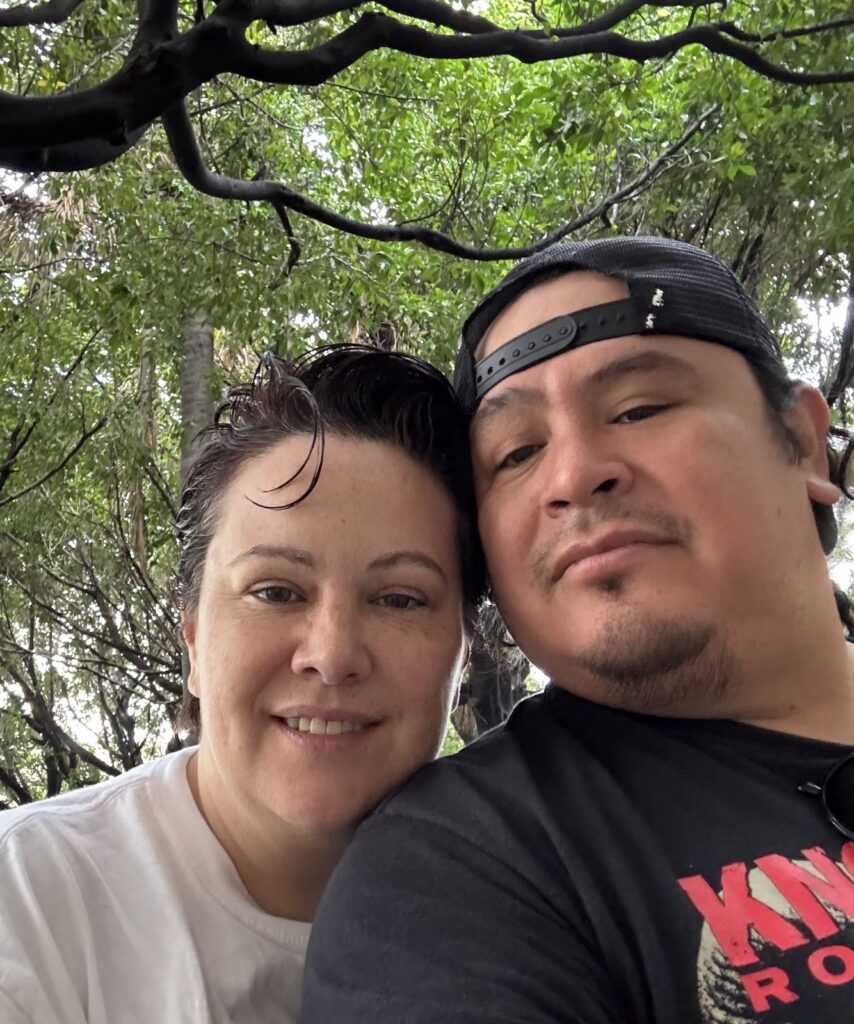
It is difficult to know precisely how many people have self-deported from the United States. The Department of Homeland Security claims that 1.6 million individuals have done so using the CBP Home app, but this number has been disputed.
Julie and Neftali represent one of 4.5 million “mixed-status” households across the country. Some of these households include a U.S. citizen married to someone without papers; others include children born in the United States to undocumented parents. All undocumented individuals are vulnerable now, but statistically, it is men who are more frequently targeted during ICE raids; when they are forcibly removed from their families, be it through arrest or self-deportation, their spouses and children are left behind to navigate a cruel system.
“We’re being robbed of time together,” Julie tells me. “When I’m having a bad day or a bad moment, I can’t feel him close like I do when he’s here.”
“We weren’t really living.”
Several states over, in North Carolina, Jenni Rivera, 54, and her husband, Fidel, 48, share a similar story. Jenni is a high school math teacher; Fidel, an electrician. They have two children together and met salsa dancing almost twenty years ago. “It was like the beginning of any relationship—we just couldn’t get enough of each other,” Jenni recalls.
Even though Fidel had been living in the U.S. without papers when they met, Jenni assumed that she could fix it through marriage. But when they went to an attorney, they learned that he would likely be barred from re-entering the country for 10 years if he tried to adjust his status. “At the time, we had an infant,” she tells me. “There was no way that I was going to separate my spouse from his daughter for 10 years.” So Jenni and Fidel accepted that they would continue to live in the shadows.

“We didn’t go anywhere [that] we couldn’t drive [to],” she remembers—boarding a plane and having IDs scrutinized by TSA agents felt too risky. That meant no more trips to Florida to see her family, and no vacations that weren’t within a short drive of their home in North Carolina. In the summer of 2024, Jenni took their daughters—both U.S. citizens by birth—on a road trip across the country, but without Fidel, it felt empty. “I knew he would love the prairie dogs,” she laughs, recalling a stop in South Dakota. “He would be making up stories about them, having ridiculous conversations with them, telling the girls stories from when he used to be a rancher.”
Over the years, it felt like the box they lived in was getting smaller and smaller. Even though they had all of the hallmarks of a good life—stable jobs, a nice house, two wonderful children—the constant threat of deportation made her painfully aware of the fact that she could someday be on her own.
“I could feel the walls closing in on us,” she describes. “We were living, but we weren’t really living.” Still, a lawyer had told Jenni that if Fidel ever got arrested, she could bail him out, and they would eventually have their day in court, where an “extreme hardship” provision in immigration policy might allow Fidel to stay in the United States. That gave her hope, but then, in September of this year, the Board of Immigration Appeals took this option away. “They blocked the one chance I had to fix anything.”
As time wore on, too, things got scarier. Detention centers, like Alligator Alcatraz, started popping up, and Jenni realized that Fidel might not just get deported—he could be detained for months, or disappear entirely. “My husband is such a good human. I did not want him to be in any of these places that we were hearing about,” she says. “I couldn’t live with myself. I wouldn’t be able to face my kids again.”
So, on October 10th, they celebrated their 17th wedding anniversary. They carved pumpkins and ordered pizza with their girls. Then Jenni helped Fidel pack for his flight to Mexico.
“It was really sad at the airport,” she tells me. “But I’ve been staying busy. I think it’s really going to hit in the quiet moments.”
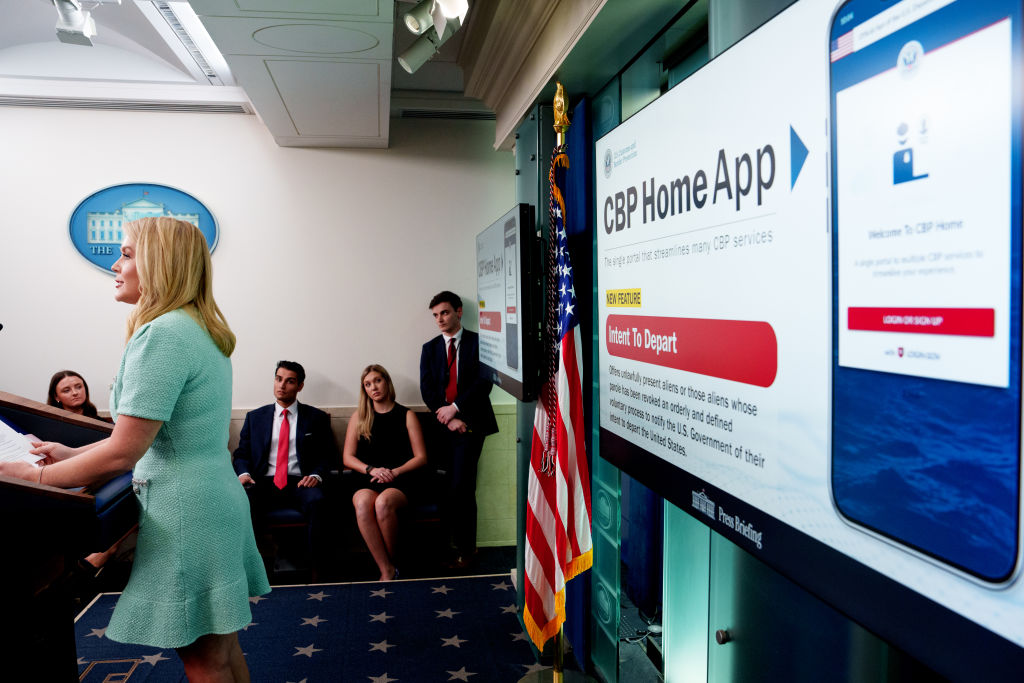
"Our plans look a little different..."
One of many frustrations that Jenni and Julie share is the amount of apathy towards immigrants that they witness among other Americans. “It isn’t just about deportation anymore,” Julie says. “It’s about detention and people disappearing and making money on detained bodies. I’m disappointed more people aren’t outraged.”
“They are destroying families,” Jenni adds. “I can’t understand what these people did that was so bad that you would want to rip the foundation of their life apart.”
Since Fidel left for Mexico, Jenni has been focusing on helping her oldest daughter with college applications. “I know if they want to come to me, they’ll come to me,” she tells me when I ask how they’re doing. “I don’t want to burden them.”
Meanwhile, Julie is continuing to support other mixed-status families through American Families United, an organization that advocates for legislation like the Dignity Act, which would allow undocumented immigrants to regularize their status provided they pass a criminal background check and pay any taxes that they owe. She’s also looking forward to the next time that she can visit Neftali in Mexico—and hopes to eventually move there.
“We talk every night,” she says. Sometimes, they reminisce about the past; mostly, they look forward to the future. While they once thought this would be in the United States, now they know that this will be in Mexico.
“Our plans look a little bit different than how we thought they would look,” Julie says. There are logistical issues. Neftali had been paying for his niece’s education, which is going to be more difficult when he’s earning in pesos instead of dollars. Julie is working on finding a way to pivot her business to something that she can do from Mexico.
“I don’t want any more time to be stolen from us,” she adds. “We’re going to work as hard as we can, so we can have a beautiful future like we always planned.”
“I feel a sense of freedom,” she says. “It’s just not in the United States.”

Anna Lekas Miller is a writer and journalist who covers stories of the ways that conflict and migration shape the lives of people around the world. She is the author of the book Love Across Borders and runs a newsletter by the same name. Follow her on Instagram: @annalekasmiller.
The FDA...Did Good?
 November 11, 2025 Greetings, Meteor readers, It’s 11/11, make a wish.  In today’s newsletter, we’re feeling optimistic about menopause. Plus, a stunning upset in Kansas City. 🥶🥶🥶🌷, The Meteor team  WHAT'S GOING ONWhat’s the HRTea?: Yesterday, Martin Makary, the FDA commissioner, announced that hormone therapies for menopause will no longer be required to carry the black box warning they’ve borne for nearly two decades. It was a difficult moment to process, mainly because it’s almost impossible to believe that a government agency overseen by a man so opposed to science actually appears to be…following the science. And for the benefit of women!? Let’s be clear: There were some fruit loops mixed in with the rational research presented by the FDA yesterday. In a breakdown of the event, reporters at Mother Jones highlighted some of the more dangerous claims, like the suggestion that untreated menopause symptoms lead to divorce (they do not) and that menopause kills women (also nope).  ACTRESS HALL BERRY, LAST YEAR, DURING A BIPARTISAN EFFORT TO INCREASE FEDERAL RESEARCH ON MENOPAUSE (VIA GETTY IMAGES) Makary and Co,’s antics aside, though, “this announcement was a step in the right direction,” says Claire Gill, founder of the National Menopause Foundation. “Removing the black box warning from low-dose vaginal estrogen products is a positive step toward improving women’s midlife health and beyond. And it’s something leading menopause experts and advocates have been trying to get corrected on labeling for more than 20 years.” If you’ve never seen one before, a black box warning (which is the highest form of warning the FDA can issue about prescription medication) lists the most severe risk factors in taking a drug. In addition to drugs used in hormone replacement therapies (HRT), the FDA has placed black box warnings on some antidepressants, opioids, and NSAIDs. In the case of HRT, the FDA issued its warnings—citing risk factors like heart attack, stroke, and breast cancer—following an initial women’s health study that began in 1991. But ”the risk and/or effectiveness of HRT was not something originally in the scope of the study,” Gill explains. When researchers at the time observed the data, there was a slight increase in breast cancer among women in the study who were on HRT versus those who were not. “What we now know,” Gill says, referencing an updated report from JAMA, “is that the women in that study at that time had initiated hormone therapy more than 10 years after they reached menopause. When the data was reviewed to determine the risk for women who started on HRT closer to the onset of menopause, it was shown that there was actually no additional risk for any of those conditions and, in fact, there were some very positive benefits [to taking HRT], in breast cancer risk reduction and osteoporosis prevention, among other things.” And as research since then has shown, HRT—while not a miracle drug, and not recommended for all women—can be an immense help in improving quality of life, reducing certain menopausal symptoms like vaginal dryness, pain during sex, and incontinence. And “an important next step,” Gill adds, “would be to convene medical societies whose members…treat women at midlife and beyond—gynecologists, internal medicine, family medicine, urologists, sexual medicine, geriatricians, etc.—and have a robust discussion to come to consensus on what all of them agree on when it comes to HRT and estrogen therapy. That would provide enormous benefit to advancing menopause care in the U.S.” AND:
 YOUR FAVORITE MUSIC GROUP'S FAVORITE MUSIC GROUP (VIA GETTY IMAGES)
 THE REASON PEOPLE STILL BELIEVE IN YOUNG LOVE. (VIA GETTY IMAGES)  FOLLOW THE METEOR Thank you for reading The Meteor! Got this from a friend?
|
![]()
Hell Hath No Fury Like a Woman Voting
 November 6, 2025 Greetings, Meteor readers, Welcome to the Mamdaniverse, where hope is alive and all foods have seasoning you can actually taste.  Today’s newsletter is just like my high school: all girls, with a couple of body slams to end the night. Should be fun! Shannon Melero  WHAT'S GOING ONSuper graphic ultra modern girls: The numbers are in, the Blue Wave has risen, and riding atop the crest on their vote-shaped surfboards are thousands upon thousands of women. According to exit poll data from the AP, in Tuesday’s three key races (New York, New Jersey, and Virginia), roughly 8 in 10 women supported Democrats, compared to 6 in 10 men. Young women in particular—and yes, we do mean Gen Z even though the rest of you are still young at heart—showed up and showed out for their candidates. What was it that rallied women under 30 to the polls this year? “They want a leader who is going to push back on the misogynist rhetoric coming from these conservative leaders,” explains Rachel Janfaza, the founder of The Up and Up, a research and strategy firm focused on Gen Z. “The way that women have been talked about, especially in some of these right-wing ecosystems, has really pissed women off.” Janfaza’s research also shows that younger women “are really taking their vote seriously…[and] their civic engagement seriously,” which doesn’t surprise her. Young millennials and Gen Zers are struggling under an economy that’s been unstable for years—economics and cost of living were the highest priority issues for a majority of voters this election cycle—and also grappling with the rollback of abortion rights. “This is an issue-driven block of women,” Janfaza says. “They’ve grown up with less rights, which is very motivating, and they’re looking to back candidates who will show up and fight for them.” AND:
 (VIA GETTY IMAGES)
 The Future of Women’s Wrestling Is Big and Bright in TexasWelcome to MetroplexBY SCARLETT HARRIS  WRESTLER AND METROPLEX OWNER, ATHENA (COURTESY OF METROPLEX WRESTLING) On the last Sunday in October, in a suburb nestled between Dallas and Fort Worth, Texas, a group of women came together for an all-women’s wrestling show hosted at Metroplex Wrestling, a woman-owned wrestling school. Titled Who Runs the World?, the show was the brainchild of All Elite Wrestling star Athena, and it followed a rousingly successful inaugural show in August; both shows featured some of the biggest names in independent women’s wrestling, including Mercedes Moné, Nyla Rose, and Kris Statlander. A third production is scheduled for January 2026, and will also stream on Twitch. This sequence of events on the indie scene—three all-women shows in six months!—is a welcome contrast to the mainstream entity World Wrestling Entertainment, which has staged just two all-women wrestling shows in its 70 year history. A TAG TEAM BATTLE BETWEEN GIGI REY & LADY BIRD MONICE MONROE AND ANARKID ASH & LONDYN DIOR (COURTESY OF METROPLEX WRESTLING) Progress for women in WWE has been slow and fitful. Earlier this year, WWE hosted Evolution 2, the much-anticipated sequel to its 2018 show of the same name. In an industry dominated by polarizing macho figureheads like the late Hulk Hogan, both Evolutions were hard-won victories in what we can call wrestling’s second-wave feminist movement, which began in earnest a decade ago and coincided with the growing popularity of women in other sports. And the wrestling on display was an evolution from the slaps, hair pulling, and derisive use of the term “Diva” that characterized women’s appearances in WWE in the decades prior. Trust that there was no sudden awakening, though. For 40 years, WWE was helmed by Vince McMahon, who has been accused of sexual abuse and is currently embroiled in a sex trafficking lawsuit. Despite the fact that current WWE leaders Paul “Triple H” Levesque and Stephanie McMahon have been congratulating themselves for platforming women’s wrestling, most wrestling fans—40 percent of whom are women—credit progress to star women wrestlers themselves, including Becky Lynch, Charlotte Flair, and Mercedes Moné (known as Sasha Banks in WWE, which she left acrimoniously in 2022). Meanwhile, in the independent wrestling scene, women competitors have been thriving for years—in promotions like Japan’s Stardom, London’s Pro Wrestling EVE (which just crowned its first transgender women’s champion in Nyla Rose), and Chicago-based Shimmer, just to name a few. “Without Shimmer, we might not be where we are today,” says former wrestler and Shimmer manager Allison Danger. “We were able to bring a lot more variety. Having different people from different backgrounds, different races, was making women’s wrestling more diverse.” (Danger is clear to credit past icons, though, “like Mildred Burke, the Jumping Bomb Angels, the Glamour Girls, Madusa, Trish and Lita.”)  THE ICONS WHO PAVED THE WAY, TRISH AND LITA (VIA GETTY IMAGES) The future of women’s wrestling can often be difficult to see because of the long shadow cast by the WWE, a behemoth that seems to only be getting bigger as it aligns with entrenched power. (Levesque has been a frequent visitor to the White House.) The WWE also seems to be getting more shameless: Many fans were turned off by the return of wrestler Brock Lesnar, who is named in the sex trafficking lawsuit against disgraced former WWE chairman Vince McMahon; and WWE has announced that WrestleMania 44 will be held in Saudi Arabia in 2027, even as the kingdom continues to be accused of sportswashing its human rights atrocities. It remains to be seen whether these all-women’s wrestling shows will have staying power. Shimmer has been on hiatus since 2021, and former WWE wrestler Mickie James has experimented with partnering with different promotions—and even different countries—to find the right fit for her all-women shows. It took WWE seven years to produce a second Evolution, despite having all the money in the world and a wealth of talent (most other WWE premium live events are annual). But do these shows need the backing of large companies like WWE? Sure, it would be great to get an annual Evolution, but women like Athena, James, and Danger remain relentless and collaborative, doing the hard work with a fraction of the resources to bring women’s wrestling to fans hungry for it. And they’re optimistic about the future. Danger points to the rise in platforms where wrestling can be consumed (a far cry from the tape-trading days when Shimmer was first launched), and says streaming has democratized the sport. Who Runs the World? streams on Twitch. There’s more opportunity than ever, she contends—and the next generation of wrestlers and promoters will seize it. Says Danger: “We’re in great hands.”  FOLLOW THE METEOR Thank you for reading The Meteor! Got this from a friend? Sign up for your own copy, sent Tuesdays and Thursdays.
|
![]()
The Future of Women’s Wrestling Is Big and Bright in Texas
Welcome to Metroplex
By Scarlett Harris
On the last Sunday in October, in a suburb nestled between Dallas and Fort Worth, Texas, a group of women came together for an all-women’s wrestling show hosted at Metroplex Wrestling, a woman-owned wrestling school. Titled Who Runs the World?, the show was the brainchild of All Elite Wrestling star Athena, and it followed a rousingly successful inaugural show in August; both shows featured some of the biggest names in independent women’s wrestling, including Mercedes Moné, Nyla Rose, and Kris Statlander. A third production is scheduled for January 2026, and will also stream on Twitch.
This sequence of events on the indie scene—three all-women shows in six months!—is a welcome contrast to the mainstream entity World Wrestling Entertainment, which has staged just two all-women wrestling shows in its 70 year history.
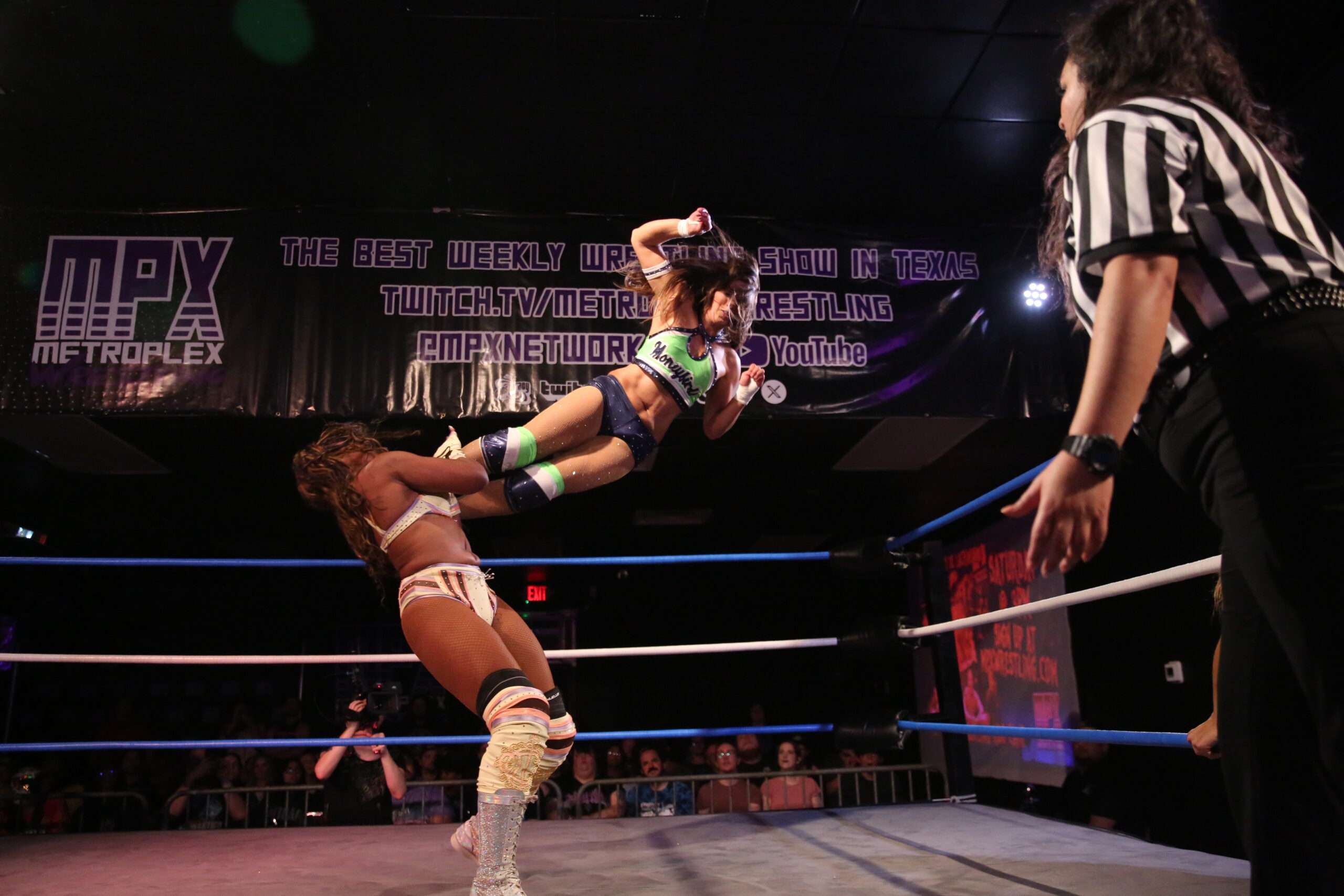
Progress for women in WWE has been slow and fitful. Earlier this year, WWE hosted Evolution 2, the much-anticipated sequel to its 2018 show of the same name. In an industry dominated by polarizing macho figureheads like the late Hulk Hogan, both Evolutions were hard-won victories in what we can call wrestling’s second-wave feminist movement, which began in earnest a decade ago and coincided with the growing popularity of women in other sports. And the wrestling on display was an evolution from the slaps, hair pulling, and derisive use of the term “Diva” that characterized women’s appearances in WWE in the decades prior. Trust that there was no sudden awakening, though. For 40 years, WWE was helmed by Vince McMahon, who has been accused of sexual abuse and is currently embroiled in a sex trafficking lawsuit. Despite the fact that current WWE leaders Paul “Triple H” Levesque and Stephanie McMahon have been congratulating themselves for platforming women’s wrestling, most wrestling fans—40 percent of whom are women—credit progress to star women wrestlers themselves, including Becky Lynch, Charlotte Flair, and Mercedes Moné (known as Sasha Banks in WWE, which she left acrimoniously in 2022).
Meanwhile, in the independent wrestling scene, women competitors have been thriving for years—in promotions like Japan’s Stardom, London’s Pro Wrestling EVE (which just crowned its first transgender women’s champion in Nyla Rose), and Chicago-based Shimmer, just to name a few. “Without Shimmer, we might not be where we are today,” says former wrestler and Shimmer manager Allison Danger. “We were able to bring a lot more variety. Having different people from different backgrounds, different races, was making women’s wrestling more diverse.” (Danger is clear to credit past icons, though, “like Mildred Burke, the Jumping Bomb Angels, the Glamour Girls, Madusa, Trish and Lita.”)

The future of women’s wrestling can often be difficult to see because of the long shadow cast by the WWE, a behemoth that seems to only be getting bigger as it aligns with entrenched power. (Levesque has been a frequent visitor to the White House.) The WWE also seems to be getting more shameless: Many fans were turned off by the return of wrestler Brock Lesnar, who is named in the sex trafficking lawsuit against disgraced former WWE chairman Vince McMahon; and WWE has announced that WrestleMania 44 will be held in Saudi Arabia in 2027, even as the kingdom continues to be accused of sportswashing its human rights atrocities.
It remains to be seen whether these all-women’s wrestling shows will have staying power. Shimmer has been on hiatus since 2021, and former WWE wrestler Mickie James has experimented with partnering with different promotions—and even different countries—to find the right fit for her all-women shows. It took WWE seven years to produce a second Evolution, despite having all the money in the world and a wealth of talent (most other WWE premium live events are annual). But do these shows need the backing of large companies like WWE? Sure, it would be great to get an annual Evolution, but women like Athena, James, and Danger remain relentless and collaborative, doing the hard work with a fraction of the resources to bring women’s wrestling to fans hungry for it.
And they’re optimistic about the future. Danger points to the rise in platforms where wrestling can be consumed (a far cry from the tape-trading days when Shimmer was first launched), and says streaming has democratized the sport. Who Runs the World? streams on Twitch.
There’s more opportunity than ever, she contends—and the next generation of wrestlers and promoters will seize it. Says Danger: “We’re in great hands.”

Scarlett Harris is a culture critic, author of A Diva Was a Female Version of a Wrestler: An Abbreviated Herstory of World Wrestling Entertainment, and editor of The Women Of Jenji Kohan.
We Vote at Dawn!
 November 3, 2025 Greetings, Meteor readers, We’re coming to you on a Monday this week because we’ll be out of the office tomorrow so that everyone has time to get their vote on.  In today’s newsletter, we’re talking about the unsuckification of the country. Plus, a record-breaking day at the New York City Marathon. xoxo, The Meteor team  WHAT'S GOING ONOff to the races: It’s the first general election since Trump began his second term in office, and, to put it in the most technical terms available, shit is rough out here. The government shutdown trudges on (although our representatives are apparently capable of finding time to do this), Head Start centers are turning children away, food pantries are struggling—it all sucks. But in the sage words all therapists have been uttering since the dawn of therapy: you’ve got to take it one day at a time. And tomorrow is a great day to take a step toward the unsuckification of the nation. First of all, the gubernatorial races in New Jersey and Virginia will be a strong signifier of what we can expect for the midterm elections. In Jersey, Democrat Mikie Sherrill is hoping to keep the state blue while pledging to safeguard New Jersey’s existing abortion protections, something her opponent Jack Ciattarelli has sworn to undo if elected. Meanwhile in Virginia, the economy and a housing affordability crisis are top of mind for voters choosing between Democrat Abigail Spanberger and Republican Lt. Governor Winsome Earl-Sears. Virginia is also the only state in the South not to have a post-Roe abortion ban, and Spanberger wants to keep it that way. (Earl-Sears has, per The Guardian, compared abortion to genocide.) The Diamond of the Season (the race everyone is talking about) is the mayoral race in New York between Zohran Mamdani and Andrew Cuomo. (We’re told Curtis Sliwa is also hanging around.) Putting the New York of it all to the side, this race is particularly symbolic. Will the people choose the status quo—a known sex pest and establishment politico—or take a chance on a newcomer who could represent a bold new era for the Democratic Party nationwide? While most of the coverage of this race has focused on Mamdani’s role as the possible first Muslim mayor of New York—and the Islamophobia aimed at his candidacy—don’t sleep on the significance of his embrace of universal child care (an idea that sounds radical but shouldn’t be). If he prevails, as he’s favored to, politicians may finally see it as a winning issue. Perhaps less glamorous but equally vital are the elections in California and Pennsylvania. The Golden State is voting on Prop 50, which would allow for new congressional maps to be drawn up and used through 2030. Think of it as reverse gerrymandering or, as we’re calling it, mandergerrying: First Texas jumped into some unusual mid-decade redistricting, reducing the impact of Black and brown voters; now, in response, California Dems are hoping to mandergerry their map to maximize their presence in Congress. And back in Pennsylvania, there are three state supreme court seats on the ballot—if the Democrats currently holding them are ousted, it could have huge implications for voting rights, abortion rights and more in a currently moderate state. So, yeah, there’s a lot on the line tomorrow—including local elections, which matter more than ever. Will those new school board members fight book bans, or cave? Will your city council hand surveillance info to ICE? The answer, in part, is up to you. Go do your thing—and we’ll see you on the other side. AND:
 OBIRI'S RECORD-BREAKING FINISH. (VIA GETTY IMAGES)
  FOLLOW THE METEOR Thank you for reading The Meteor! Got this from a friend?
|
![]()


